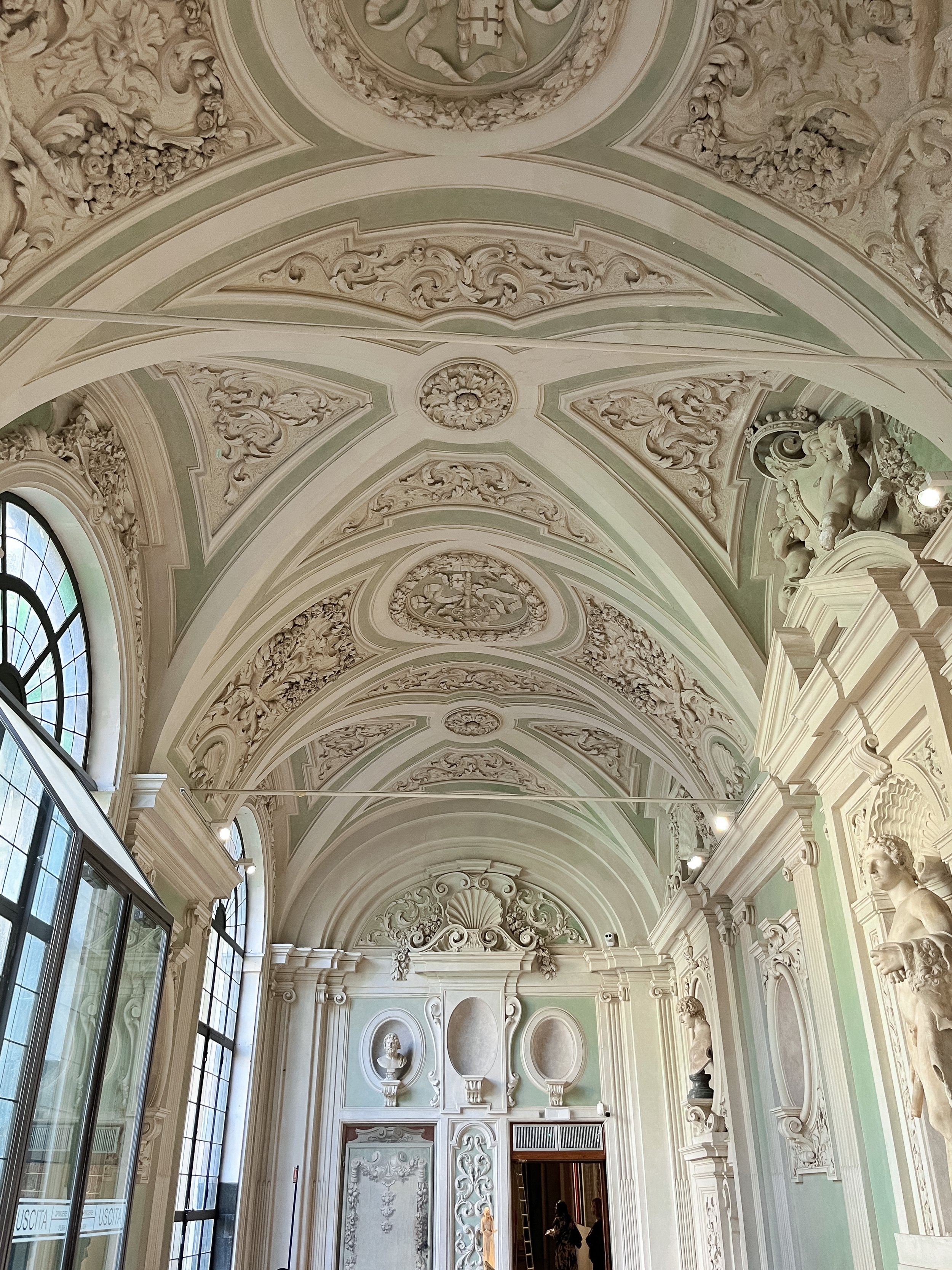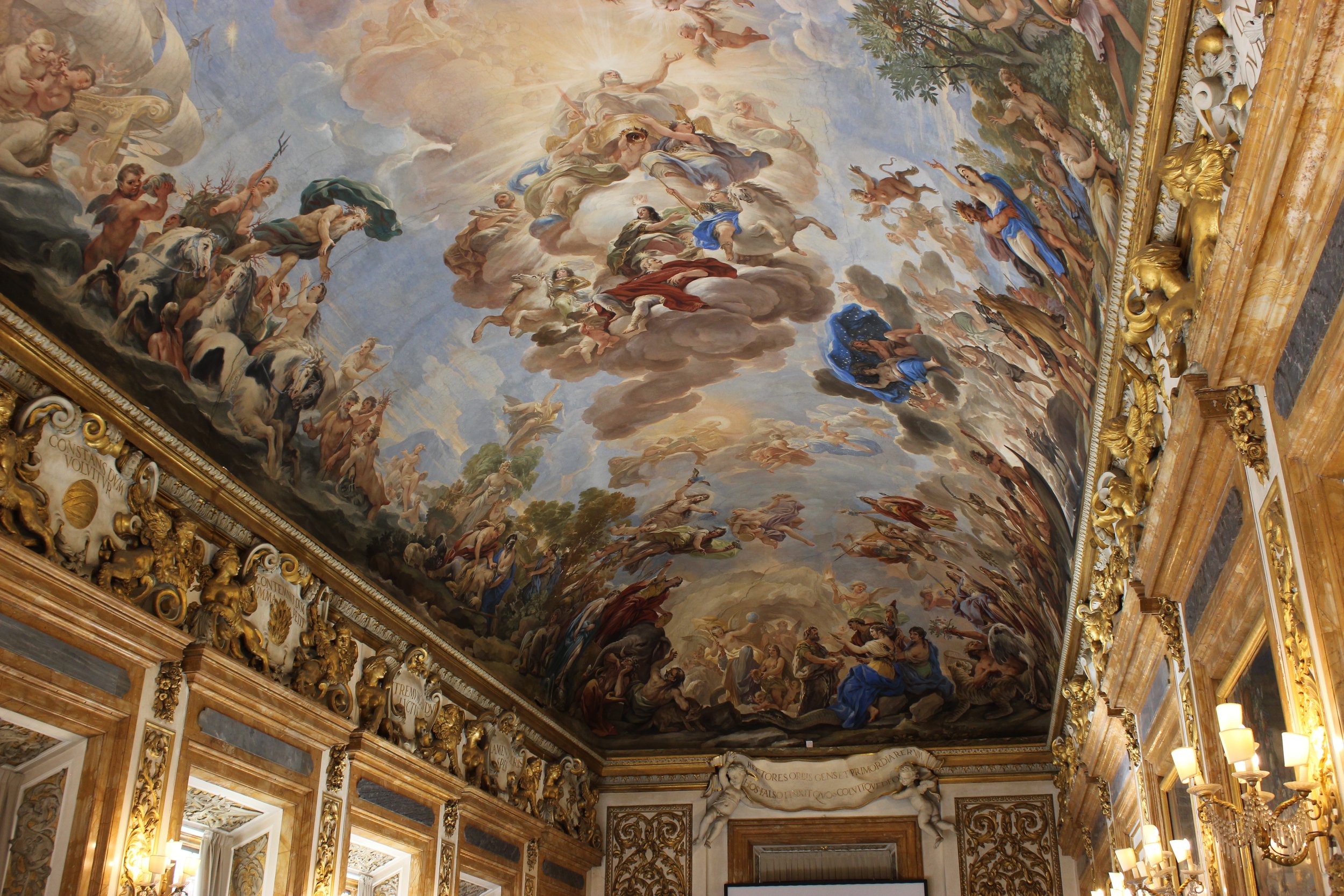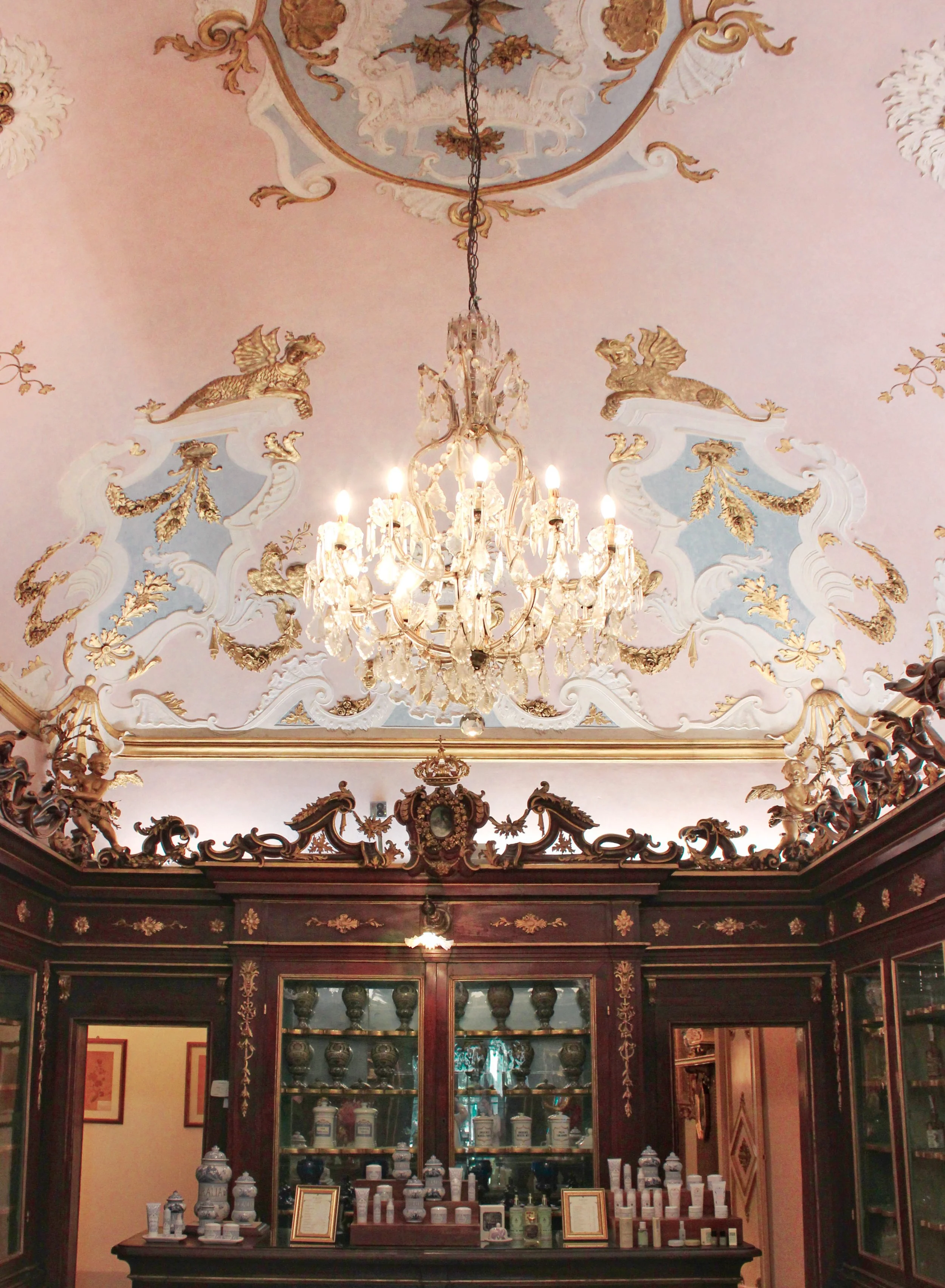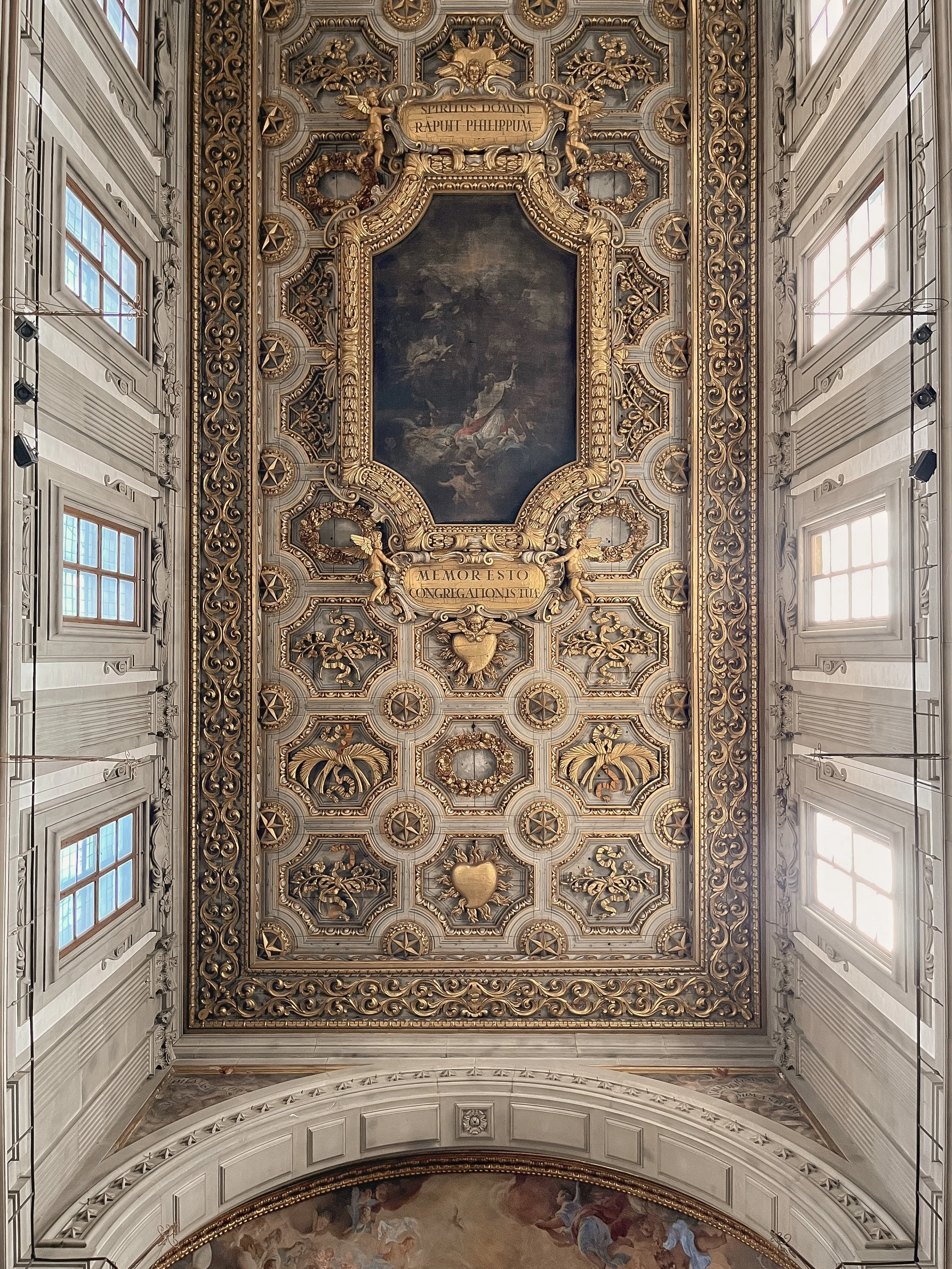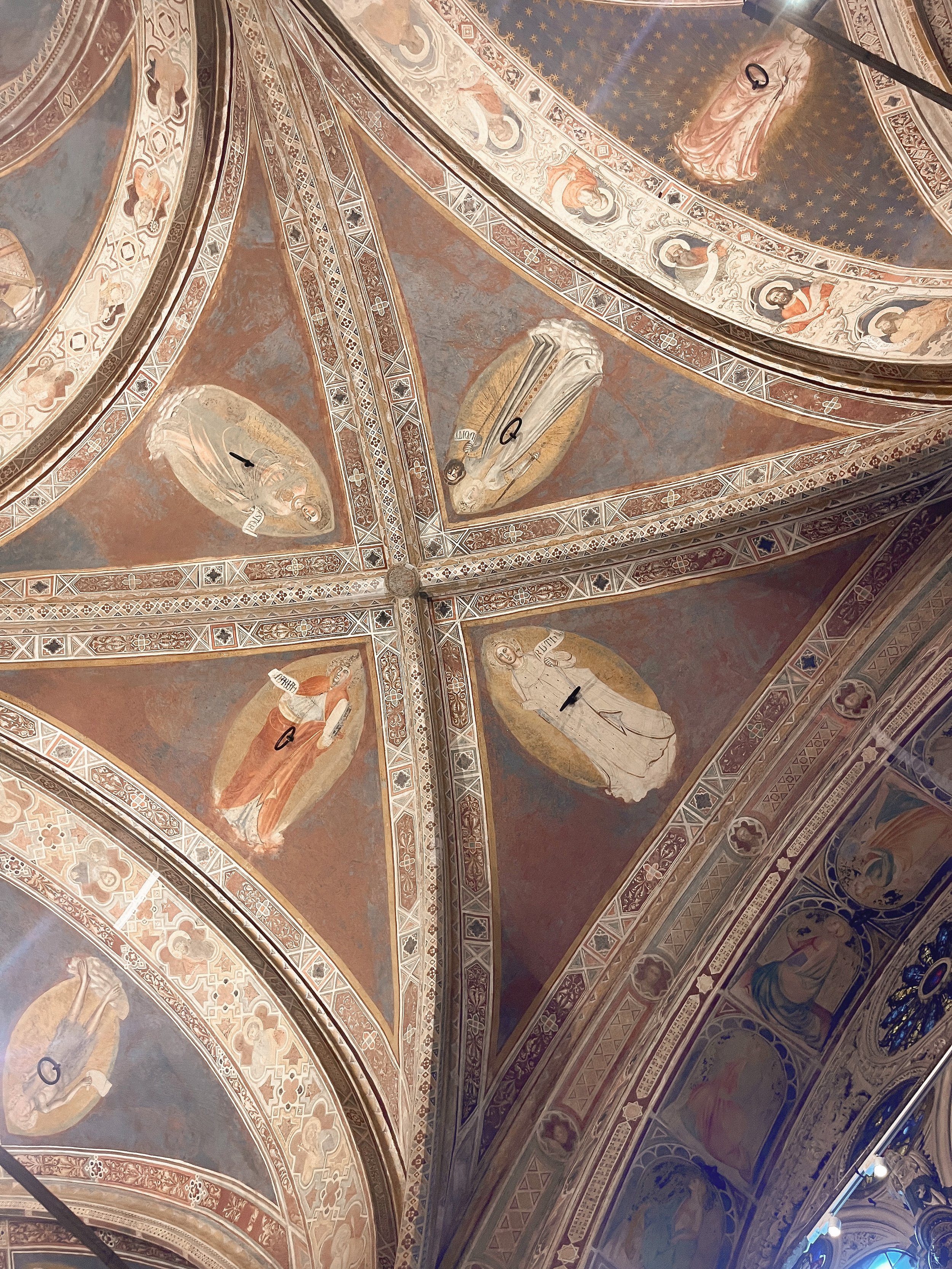The most beautiful ceilings in Florence, Italy
Florence is full of art, but what I did not expect was how much of it was contained on the ceilings of the places I visited, rather than the walls. Here are the best ceilings to see in Florence.
Palazzo Medici Riccardi
This plasterwork ceiling accented with a light green trim can be found on the ground floor of the Palazzo Medici Riccardi, looking out onto the garden. The natural light in this room makes it all the better and at the time I visited it was used to display contemporary sculpture which was an interesting contrast. This museum is in the San Marco neighbourhood near many more artistic and architectural gems.
The Palazzo Medici Riccardi is a magnificent example of Renaissance architecture, with its rusticated stone facade and delicate stone detailing. The building was designed by Michelozzo di Bartolomeo for the Medici family in the 15th century and features a stunning courtyard, decorated with frescoes and sculptures. The architecture of the Palazzo Medici Riccardi reflects the ideals of the Renaissance, emphasizing symmetry, proportion, and the classical orders. It is considered one of the most important examples of Florentine architecture, and visitors can explore its fascinating history and architecture through a guided tour.
Luca Giordano Gallery at the Palazzo Medici Riccardi
In a ‘newer’ addition to the Palazzo Medici Riccardi from the 17th century, this ceiling by Luca Giordano depicts the Apotheosis of the Medici. It looks like the room is used for events—imagine a wedding in here!
This ceiling painting is a monumental work that celebrates the powerful Medici family. The composition features a central figure of the Medici coat of arms surrounded by gods and goddesses, allegorical figures, and cherubs. The figures are depicted in a dynamic and theatrical style, with vivid colors and dramatic lighting effects. Giordano's skillful use of illusionistic effects and his ability to create a sense of grandeur and splendor make the Apotheosis of the Medici a masterpiece of Baroque art.
The Officina Profumo-Farmaceutica di Santa Maria Novella
The flagship store of the Santa Maria Novella brand of perfumes is exceptionally beautiful. It is hard to imagine it was once a pharmacy. This room in particular is stunning with its pink ceiling.
The store is housed in a beautifully preserved 13th-century building, with elegant arches, high vaulted ceilings, and intricate frescoes adorning the walls. The architecture of the space perfectly complements the brand's aesthetic, offering customers a luxurious shopping experience that feels steeped in history and tradition. The use of antique furnishings, elaborate glass cabinets, and hand-carved wooden panels further enhance the store's opulent atmosphere, making it a must-visit destination for anyone interested in the history of Italian perfumery and pharmacy.
Church at the Complex of San Firenze
I stopped at this church just south of the Duomo to have a peek inside and was pleasantly surprised with this beautiful gilded ceiling, including the flaming hearts.
The complex was commissioned by the Oratorians of Saint Philip Neri, who acquired a drab 12th-century Romanesque brick church of San Florenzio in the 1640s and commissioned plans to construct an oratory. The current nearly symmetric arrangement of the church, seminary, and oratory was achieved by Ferdinando Ruggieri and Zanobi Del Rosso in the 18th century. The elaborate and costly stucco work of the nave was completed between 1668 and 1673 by a team of artists, and the interior is decorated with works by notable artists such as Carlo Maratta and Niccolò Lapi. The complex retains its original function as a church and is also used for events and concerts.
Orsanmichele
The church of Orsanmichele has a long and fascinating history. The ceiling frescoes inside the church feel truly ancient; when visiting I could imagine what it would be like as one of the many pilgrims who visited the church centuries ago.
Orsanmichele is a historic building in Florence with a fascinating past. Its origins date back to the 8th century when it was an oratory of San Michele. Over time, it evolved from a place of commerce into a place of devotion, with miracles attributed to an image of the Virgin. The structure was expanded and transformed to serve both civic and religious functions. Today, Orsanmichele is a museum where visitors can see exquisite sculptures by renowned artists such as Donatello and Ghiberti. The museum is still being developed, but the interior of the building has retained its late Gothic appearance, and the square layout and piers recall the original open loggia.
The Uffizi Gallery
The Uffizi Gallery is of course famous for its many masterpieces, but I was taken by its frescoed ceilings. They were painted by Allessandro Allori in the 16th century, in what was called a grottesche/grotesque style, influenced by ancient Roman discoveries. I loved this moment picturing the three graces in a roundel in the centre.
The intricate ceiling frescoes were painted by Alessandro Allori in the late 16th century and depict allegorical figures and scenes from classical mythology. The frescoes are a stunning example of Mannerist style and add an impressive visual element to the already breathtaking artwork on display. The Uffizi is one of the best things to see in the centre of Florence.
All of Florence seems surrounded by art, and there is so much to look at around you when visiting the city. Just don’t forget to look up!

